Stand on the shoulders of giants and follow international standards

- 591 shares
- 8 years ago
User-centered design (UCD) is an iterative design process in which designers focus on the users and their needs in each phase of the design process. In UCD, design teams involve users throughout the design process via a variety of research and design techniques, to create highly usable and accessible products for them.
In user-centered design, designers use a mixture of investigative methods and tools (e.g., surveys and interviews) and generative ones (e.g., brainstorming) to develop an understanding of user needs. The term was coined in the 1970s. Later, cognitive science and user experience expert Don Norman adopted the term in his extensive work on improving what people experience in their use of items. And the term rose in prominence thanks to works such as User Centered System Design: New Perspectives on Human-Computer Interaction (which Norman co-authored with Stephen W. Draper) and Norman’s The Design of Everyday Things (originally titled The Psychology of Everyday Things).
In the very beginning, when I first started becoming a designer, which was the 1980s, I was concerned about the early adoption of computer systems which were really almost impossible for anybody to understand. Even the experts who designed them were making errors in using them. And there's a famous case where the early Unix systems had a text editor
that was called 'Ed', for 'editor'. You could type away and type your program or your text, whatever you were doing, and spend several hours typing it. And you'd have this wonderful document. And then you (say), 'Ah, I'm finished!' and you turn off the machine and go home. And you come back the next morning to continue, and... it wasn't there. Well, why wasn't it there? Because you *didn't save* it. And, well, you mean... The system doesn't bother to tell you when you try to turn it off that 'Hey – you want to save the information?'
It was little things like that that were so frustrating. In the early days, what we did was we tried to study the people who used these complex systems. And it was not just computer systems; I actually started off studying *nuclear power systems*, some of the nuclear power accidents where the control rooms were so badly designed that if you wanted to cause an error, you could not have done a better job in designing something to cause errors. And then *aviation safety*, where lives were at stake; many lives were at stake, and there were a huge amount of research and work done.
And that was a really good place to work. I worked with the American National Aeronautics and Space Administration (NASA). Most people think of NASA as shooting rockets up into space, but they forget the first two letters, 'NA', are 'Aeronautics'; and so, NASA is the world's leader often in aviation safety. And that's where I started. So, we were looking, though, at the *users* of these systems, and so we called them 'users'.
Generally, each iteration of the UCD approach involves four distinct phases. First, as designers working in teams, we try to understand the context in which users may use a system. Then, we identify and specify the users’ requirements. A design phase follows, in which the design team develops solutions. The team then proceeds to an evaluation phase. Here, you assess the outcomes of the evaluation against the users’ context and requirements, to check how well a design is performing. More specifically, you see how close it is to a level that matches the users’ specific context and satisfies all of their relevant needs. From here, your team makes further iterations of these four phases, and you continue until the evaluation results are satisfactory.
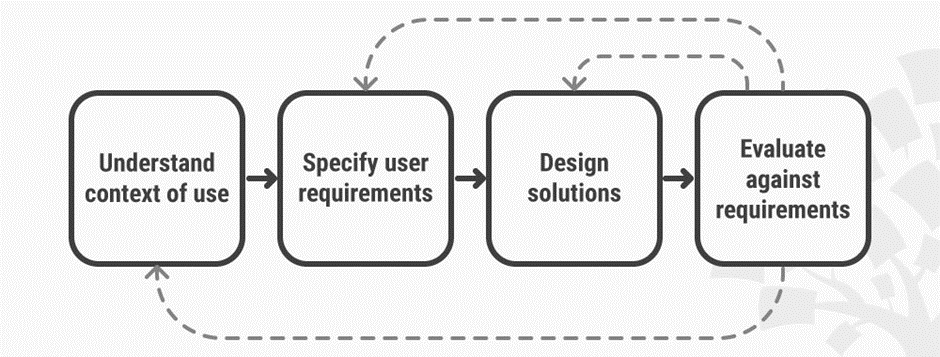
User-centered design is an iterative process that focuses on an understanding of the users and their context in all stages of design and development.
In UCD, you base your projects upon an explicit understanding of the users, tasks and environments. The aim of the process is to capture and address the whole user experience. Therefore, your design team should include professionals from across multiple disciplines (e.g., ethnographers, psychologists, software and hardware engineers), as well as domain experts, stakeholders and the users themselves. Experts may carry out evaluations of the produced designs, using design guidelines and criteria. However, you should bear two crucial points in mind. First, to span the entire user experience, you must involve the users for evaluation. Second, you'll need to ensure long-term monitoring of use.
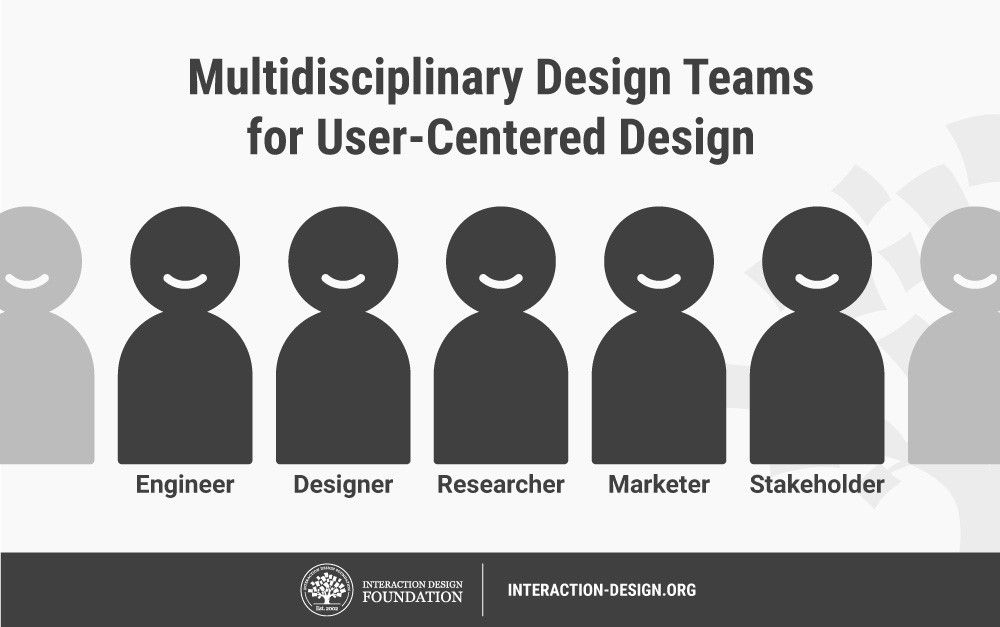
When your design team brings the users into every stage of the design process, you invest your effort and other resources into a powerful way of finding out what works well, what doesn’t and why. Your users are an early-warning system you can use to course-correct and fine-tune your design. They can expose many aspects—positive and negative—your team may have overlooked regarding such vital areas as usability and accessibility. That’s why it’s so important to understand how powerful the benefits of a user-centered design approach are.
“Being human-centred is an additional cost to any project, so businesses rightly ask whether taking so much time to talk to people, produce prototype designs and so on is worthwhile. The answer is a fundamental ‘yes’.”
— David Benyon, Professor with over 25 years of experience in the field of HCI
David Benyon distinguishes four ways in which UCD pays off:
With close user involvement, products are more likely to meet users’ expectations and requirements. This leads to increased sales and lower costs incurred by customer services.
Systems designers tailor products for people in specific contexts and with specific tasks, thereby reducing the chances of situations with a high risk of human error arising. UCD leads to safer products.
Putting designers in close contact with users means a deeper sense of empathy emerges. This is essential in creating ethical designs that respect privacy and the quality of life.
By focusing on all users of a product, designers can recognize the diversity of cultures and human values through UCD – a step in the right direction towards creating sustainable businesses.
Take our 21st Century Design course with Don Norman to study areas of UCD.
Hi, I'm Don Norman. I want to talk about 21st century design. I've transformed myself from – well, in the beginning, a technology nerd. And all I cared about was the latest circuit design and the latest new device or the latest new technology. And I've changed to now where I'm worried more and more and more about the state of the world,
about the many societal issues that we are facing – some of them are political; some of them are economic; some of them have to do with education, hunger, food, pure water, sanitation. When I look at some of the major problems in the world that we are trying to address, and I take those problems from the United Nations, which has a list of 17 sustainable development problems that are extremely critical. Those are not new problems; they're well known.
There's all sorts of issues there that many, many very talented people have been trying to solve for a long time. Many governments, the United Nations itself, many foundations – almost all of these systems have *failed*. They've spent *billions* of dollars, taking *decades* of time. And most of the time, they fail. And even when they do succeed, they only succeed for a small part of the problem and usually taking many, many more years than they had expected
and costing two or three or four times as much money as they expected. And I'm talking about money measured in *billions* of dollars. What can *designers* offer? Here's what we can offer. Design is a mechanism because designers *do things*. They go out and they change the world. But we have to move design from designing small, simple things to designing *systems*, to designing political systems,
to designing *solutions* to clean water and education and healthcare. How do we do that? Well, over the years I've come to develop something which is now called *human-centered design*. Designers have that skill – by finding the right problem, bringing together the systems, and always a focus upon the people – or, if you like, upon *humanity*. So, that's the power that designers have
— *if* — here's the "if": Are you a designer? If you are, are you capable of working on a problem like that? Most designers are not. They can *learn*, but they weren't trained to do problems of this sort. You don't necessarily need to get this training in a design school. You can do it by yourself. So, you can teach yourself all the material you need to know to become a successful designer.
But in the 21st century, we're moving to more and more complex problems that do require the talents of a designer. And these new kinds of problems are going to require new types of knowledge and new types of learning on the part of the designer. There you are – a great challenge. But that is the future of design. I want to talk about examples of what designers might be doing in the 21st century.
Read Don Norman and Stephen W. Draper’s User Centered System Design: New Perspectives on Human-computer Interaction for a wealth of insights into this fascinating subject.
Don Norman’s legendary book The Design of Everyday Things covers a wide array of UCD aspects.
You can read more about user-centered design from Professor David Benyon in his book Designing Interactive Systems – A Comprehensive Guide to HCI, UX and Interaction Design.
UXmastery.com has created a list of techniques that you can use in a UX design process. Many of them will help you put the user center stage in your project. Browse the techniques here.
In the context of user-centered design, a persona is a detailed and semi-fictional representation of an ideal user of a system. It is a tool used by designers to maintain focus on the user's needs throughout the design process. A persona typically includes demographics, needs, goals, and behavioral patterns.
HCI expert Prof Alan Dix explains how a persona, such as 'Betty', can be created with details like age, education, job role, and challenges faced to help designers understand and address the specific needs of similar users.
Personas are one of these things that gets used in very, very many ways during design. A persona is a rich description or description of a user. It's similar in some sense, to an example user, somebody that you're going to talk about. But it usually is not a particular person. And that's for sometimes reasons of confidentiality.
Sometimes it's you want to capture about something slightly more generic than the actual user you talked to, that in some ways represents the group, but is still particular enough that you can think about it. Typically, not one persona, you usually have several personas. We'll come back to that. You use this persona description, it's a description of the example user, in many ways during design. You can ask questions like "What would Betty think?"
You've got a persona called / about Betty, "what would Betty think" or "how would Betty feel about using this aspect of the system? Would Betty understand this? Would Betty be able to do this?" So we can ask questions by letting those personas seed our understanding, seed our imagination. Crucially, the details matter here. You want to make the persona real. So what we want to do is take this persona, an image of this example user, and to be able to ask those questions: will this user..., what will this user feel about
this feature? How will this user use this system in order to be able to answer those questions? It needs to seed your imagination well enough. It has to feel realistic enough to be able to do that. Just like when you read that book and you think, no, that person would never do that. You've understood them well enough that certain things they do feel out of character. You need to understand the character of your persona.
For different purposes actually, different levels of detail are useful. So I'm going to sort of start off with the least and go to the ones which I think are actually seeding that rich understanding. So at one level, you can just look at your demographics. You're going to design for warehouse managers, maybe. For a new system that goes into warehouses. So you look at the demographics, you might have looked at their age. It might be that on the whole that they're older. Because they're managers, the older end. So there's only a small number under 35. The majority
are over 35, about 50:50 between those who are in the sort of slightly more in the older group. So that's about 40 percent of them in the 35 to 50 age group, and about half of them are older than 50. So on the whole list, sort of towards the older end group. About two thirds are male, a third are female. Education wise, the vast majority have not got any sort of further education beyond school. About 57 percent we've got here are school.
We've got a certain number that have done basic college level education and a small percentage of warehouse managers have had a university education. That's some sense of things. These are invented, by the way, I should say, not real demographics. Did have children at home. The people, you might have got this from some big survey or from existing knowledge of the world, or by asking the employer that you're dealing with to give you the statistics. So perhaps about a third of them have got children at home, but two thirds of them haven't.
And what about disability? About three quarters of them have no disability whatsoever. About one quarter do. Actually, in society it's surprising. You might... if you think of disability in terms of major disability, perhaps having a missing limb or being completely blind or completely deaf. Then you start relatively small numbers. But if you include a wider range of disabilities, typically it gets bigger. And in fact can become
very, very large. If you include, for instance, using corrective vision with glasses, then actually these numbers will start to look quite small. Within this, in whatever definition they've used, they've got up to about 17 percent with the minor disability and about eight percent with a major disability. So far, so good. So now, can you design for a warehouse manager given this? Well,
you might start to fill in examples for yourself. So you might sort of almost like start to create the next stage. But it's hard. So let's look at a particular user profile. Again, this could be a real user, but let's imagine this as a typical user in a way. So here's Betty Wilcox. So she's here as a typical user. And in fact, actually, if you look at her, she's on the younger end. She's not necessarily the only one, you usually have several of these. And she's female as well. Notice only up to a third of our warehouse ones are female. So
she's not necessarily the center one. We'll come back to this in a moment, but she is an example user. One example user. This might have been based on somebody you've talked to, and then you're sort of abstracting in a way. So, Betty Wilcox. Thirty-seven, female, college education. She's got children at home, one's seven, one's 15. And she does have a minor disability, which is in her left hand. And it's there's slight problem in her left hand.
Can you design, can you ask, what would Betty think? You're probably doing a bit better at this now. You start to picture her a bit. And you've probably got almost like an image in your head as we talk about Betty. So it's getting better. So now let's go to a different one. You know, this is now Betty. Betty is 37 years old. She's been a warehouse manager for five years and worked for Simpkins Brothers Engineering for 12 years. She didn't go to university, but has studied in her evenings for a business diploma.
That was her college education. She has two children aged 15 and seven and does not like to work late. Presumably because we put it here, because of the children. But she did part of an introductory in-house computer course some years ago. But it was interrupted when she was promoted, and she can no longer afford to take the time. Her vision is perfect, but a left hand movement, remember from the description a moment ago, is slightly restricted because of an industrial accident three years ago.
She's enthusiastic about her work and is happy to delegate responsibility and to take suggestions from the staff. Actually, we're seeing somebody who is confident in her overall abilities, otherwise she wouldn't be somebody happy to take suggestions. If you're not competent, you don't. We sort of see that, we start to see a picture of her. However, she does feel threatened – simply, she is confident in general – but she does feel threatened by the introduction of yet another computer system. The third since she's been working at Simpkins Brothers. So now, when we think about that, do you have a better vision of Betty?
Do you feel you might be in a position to start talking about..."Yeah, if I design this sort of feature, is this something that's going to work with Betty? Or not"? By having a rich description, she becomes a person. Not just a set of demographics. But then you can start to think about the person, design for the person and use that rich human understanding you have in order to create a better design.
So it's an example of a user, as I said not necessarily a real one. You're going to use this as a surrogate and these details really, really matter. You want Betty to be real to you as a designer, real to your clients as you talk to them. Real to your fellow designers as you talk to them. To the developers around you, to different people. Crucially, though, I've already said this, there's not just one. You usually want several different personas because the users you deal with are all different.
You know, we're all different. And the user group – it's warehouse managers – it's quite a relatively narrow and constrained set of users, will all be different. Now, you can't have one persona for every user, but you can try and spread. You can look at the range of users. So now that demographics picture I gave, we actually said, what's their level of education? That's one way to look at that range. You can think of it as a broad range of users.
The obvious thing to do is to have the absolute average user. So you almost look for them: "What's the typical thing? Yes, okay." In my original demographics the majority have no college education, they were school educated only. We said that was your education one, two thirds of them male – I'd have gone for somebody else who was male. Go down the list, bang in the centre. Now it's useful to have that center one, but if that's the only person you deal with, you're not thinking about the range. But certainly you want people who in some sense
cover the range, that give you a sense of the different kinds of people. And hopefully also by having several, reminds you constantly that they are a range and have a different set of characteristics, that there are different people, not just a generic user.
This detailed description helps seed the imagination of designers and enables them to ask critical questions like "Would Betty understand this feature?" or "How would Betty feel about using this aspect of the system?". This approach ultimately leads to a more user-centered and effective design.
If you're interested in learning more about personas, user-centered design, and other essential concepts, consider taking the Design Thinking: The Ultimate Guide course.
The user-centered design process involves understanding users and their contexts, identifying user pain points and needs, designing solutions to address those needs and evaluating the solutions to ensure they meet users’ requirements.
So, you've gone out, you've talked to your users. You've done a field study, basically interviews, user interviews and observations of their tasks, of their environment. And what do you do with that? Personas and journey maps. So, I just wanted to talk a little bit about personas in particular. Journey maps are also important, but I'm just going to cover personas. Where you get your data from is hugely important. Most people just use surveys.
Some people use focus groups. Those are both market research techniques. They're not appropriate for UX. Why? Because in UX we're looking at *behavior*, not at opinion. And focus groups and surveys do a lot of opinion elicitation. They're fine for marketing, but they really have no place in UX. So, if you do market research and just use like a segmentation approach or market research approach, you're going to end up with a different type of persona.
So, if you do field studies, you'll end up observing their behavior and then creating behavioral profiles or role-based personas, and you'll understand better the context and the conditions under which your mobile app or device mobile content is being consumed. And that's super important. This is an example of a persona, and you can adjust a persona. But basically you have a scenario. I've started writing my personas in first person.
So, literally the notes I take, I'll build the persona based on actually what the user said. And it's about 98% verbatim, like what they said with a few corrections of – you know – grammar and stuff like that. I won't change the meaning. I won't remove the words from their mouth and rephrase them in my head. I won't alter or fabricate them. And it's a technique that I learned from Whitney Quesenbery, a UX consultant
who's written a book about storytelling and personas in particular, because personas are really about *stories*; they're really about telling stories about that context. Try it right now. So, think about the personas that might, the roles that people, the problems they might solve with your app. And in a narrative kind of style, write one or two sentences on their background to kind of set the context; write two or three more sentences on the problems that they're trying to solve, like the tasks, and two or three sentences on the call to action,
like what they need, what their desires are or how the design can basically help them get to their task, how can it empower them? How you can meet their needs, their goals, their tasks, their sub-tasks? If you have a lot of questions, it's probably because you need to spend more time with your users. Once you start hanging out with users doing field studies, you get to know what they need and the context of use becomes very apparent.
It's one of the most enlightening things I think about personas. But also you understand their *distractions*, their deeper kind of emotional and social context. You understand what multi-tasking they might be doing and what problem solving or the different states, the varied states that they might use, kind of usage scenarios, if you will, but in different states. So, to create a role-based persona, identify the personas based on your data, so the themes that come out, the different hats that users are trying to wear.
And then give them a name, like not just like Sally or Susan or Jim or John or something. But give them an associating adjective such as Support-Seeker Sally or Finance Fiona, I think was that other one there. Okay, so continuing with persona development, think about these things: *environmental impact*, so the context of use; *cognitive impact*, the time, for example, the time pressure or stress that they might be under.
Think of the *social impact* – the triggers that might lead to that such as another user or somebody else online or started a chat or tripped off – I don't know – a support call or whatever. And finally the *behavioral impact* – so, for example, the roles that not just the user has but the roles that the user must assume to complete the task. There's also *mental models*. So, mental models being these past expectations
that users bring to their designs; they basically influence how a user problem solves. And think about like the mental model for the restaurant experience – you know – what does that look like? For example, you enter the restaurant; there might be waiting, you might have to check in, you may have to order ahead, you might have a pickup situation. Some restaurants have made a separate place for the food delivery people to go
so that they're not standing there waiting with the the diners that are coming to the restaurant for the "live food". You can conduct *task analysis*, which is asking the user to do the task. You know – you can accompany them, a doctor's visit, restaurant visit, whatever it might be. You can accompany the user and look for the language they use, the way they talk about it, look at the physical, social environment, look at their functional needs and priorities and maybe even the cognitive demands that they have.
So, for example, they have to figure something out; they have to fill in a form. They have to submit this. There's a pressure to answer these questions or to know something. Look at the task space, how they're making sense of things, how they're deciding or solving problems for themselves. Remember, we don't just have goals and tasks, but we have *sub-tasks* as well. So, we need all three of those things, not just goals. It's so important that we make sure that we drill deeper down
into our users' behavior so we fully understand what it is and bring that out. So, doing that, though, is so well worth it and makes you a much smarter designer and a much smarter design team.
CEO of Experience Dynamics Frank Spillers uses Personas to illustrate the importance of field studies to understand the context of use.
User-centered design principles are essential in creating products that meet users' needs and expectations.
I want to talk about 21st Century Design. So, what do I mean by that? I mean it's a different kind of design. It's not the traditional design where we make beautiful, wonderful objects and wonderful experiences. It's about thinking about design as *a way of thinking*, *a way of addressing the major problems of the world* because designers have a special way of addressing issues. We call it *Design Thinking* – it comes under many other different names.
But it's what designers have been doing for, well, since the beginning of designers. What is design as a way of thinking? Well, here's how I like to talk about it. First of all, well, it's *human-centered*. So, we always *focus upon the people*, and that's very important because it's the *only* discipline where the *major focus is about making things that are appropriate for people*. Second, we *solve the right problem*.
Third, we *recognize that everything is a system*. You can't solve one little piece, because everything is interconnected. So, you have to really look at the nature of the system. And, finally – and this is extremely important – we *don't rush* to a solution. We know that when we're dealing with human beings and societies and different cultures and political forces and economic factors that whatever we do is *probably not* going to be right.
So, what we do is we *try a simple, small intervention*. We see what the results are; then we modify it, and we continually experiment, do an intervention, learn from it, change what we're doing, and slowly we'll get bigger and bigger because each one allows us to do even more the next time, and we'll get better and better. Design is an interesting discipline.
They learn the techniques; they learn the problem-solving and problem-defining methods; they have a whole bunch of powerful tools. And then, because we don't know the details of healthcare or even housing, we have to bring in the experts; so, we have to have a multidisciplinary team where we work together with people from all types of skills. And the most important thing – this has to *come from the people*.
We can mentor. We can facilitate. We can bring in other resources. You have difficulty – individuals have *difficulty tackling the whole system* or tackling the *political issues*, but that's where *we* can come in and help. So, we call that *community-driven design*, which is a subset of *human-centered design*, which, as far as I am concerned, is really about *designing for humanity*. So, human-centered design is a subset of *humanity-driven design*, *humanity-centered design*, because we're trying to save
– well – the planet.
Focusing on the people: This is the cornerstone of user-centered design. It involves understanding the needs, preferences, and limitations of the end-users.
Solving the right problem: Defining and understanding the problem correctly is essential before jumping to solutions. Thorough research and analysis are necessary to design for users' actual needs.
Recognizing everything as a system: Everything is interconnected, and changing one part of the system can affect others.
Not rushing to a solution: User-centered design is complex and involves various factors like societies, cultures, political forces, and economic factors.
The course "Design for a Better World with Don Norman" provides an in-depth understanding of these principles and how they can be applied to create designs that positively impact humanity.
Research: This is the first stage where you focus on understanding the users' needs, preferences, and behaviors. You collect data through various methods such as interviews, surveys, and observations.
Requirements: Based on the research findings, you define the requirements—what problems and pain points do you intend to solve for the users
Design: In this stage, you create solutions based on the requirements. You create wireframes, mockups, and prototypes addressing users' needs and pain points.
Evaluation: This stage involves testing the designed solutions with real users to identify usability issues and improvement areas. Various testing methods, such as usability testing, A/B testing, and heuristic evaluation, can be used.
These steps align closely with the 5-phase design thinking model. Learn more about this non-linear and iterative approach to develop and launch innovative ideas in this video:
Design thinking improves the world around us every day because of its ability to generate groundbreaking solutions. You can contribute to the future developments in a similar way if you adopt the design thinking mindset into your own work procedures. But first, you need to know what the five phases of design thinking are. And that's what this video will teach you. Design thinking is a *non-linear, iterative process* that can have anywhere from three to seven phases, depending on who you talk to.
The model we chose to focus on here at IxDF has five. As we mentioned, the design thinking process is *non-linear* and *iterative*. This means you don't have to follow the five phases in any particular order. You can carry out the stages in parallel or repeat them and circle back to a previous stage at any point in the process. Basically, don't ever think these pieces are set in stone. The whole point of design thinking is that it allows you to work in a *dynamic way* to *develop and launch innovative ideas*.
There's no need to use design thinking as a step-by-step process, unless the situation calls for it. Now, you may wonder why we chose to focus on *this* particular variation of the design thinking process. We picked the *5-phase model* because it's the one proposed by the Hasso Plattner Institute of Design at Stanford. Actually, you may have heard it called its more common name: the d-school. They are world-renowned for the way they teach and apply design thinking. So, who better to take inspiration and learn from? And there's no need to worry; you won't miss out!
Regardless of which design thinking model you personally choose to focus on, all variants embody the same principles which were first described in 1969 by Nobel Prize laureate Herbert Simon when he wrote *The Sciences of the Artificial*. We hope this short video has given you a good introduction to the five phases of design thinking. We can't wait for you to learn more about this revolutionary process!
Hasso-Platner Institute Panorama
Ludwig Wilhelm Wall, CC BY-SA 3.0 <https://creativecommons.org/licenses/by-sa/3.0>, via Wikimedia Commons
User-centered design is important because it helps teams create useful and usable products for people.
Don Norman describes the evolution of user-centered design and why he believes user-centered design (and its newer avatars) can help address global issues.
Human-Centered Design (HCD) is an approach to design that emphasizes creating solutions that address people's unique needs and abilities. It involves understanding the community's challenges, learning from them, and collaborating to develop solutions that effectively tackle their particular issues.
It's very common for design students to say, "Oh! Let's tackle some of the world's most important problems!" So, off they go to India or Africa or South America or wherever they think there's some need for clever, sophisticated designers to come in and help the poor people in whatever area of the world they wish to go.
And so, the designers spend a week, two weeks; rarely do they spend even a month. And they go around and they see real issues and they say, "Oh, we know how to work on that!" And they come back and they start to design something for their target country. The problem is that these are very clever people and they did see real problems and they did analyze the problem properly... but they really *do not understand* the people that they're designing for,
because they were there for what – a week? Two weeks? Even, at best, a month? People who live in foreign countries tell me – and I've lived in foreign countries, too, so I agree that, you know, after a year or two years or three years, you're just beginning to understand the country. In fact, in the first year, it's usually wonderful; everybody treats you well and you understand what's going on and you think, "Oh yeah, I understand the country." But, no, people are treating you well and they're being nice to you; they're not telling you the truth;
they're not letting you see what really goes on. And it's only after you've been there awhile, you discover what's really happening in the country. And awhile means *years*. So, you can't just do this, and what happens is the students, they develop these wonderful creative ideas, and quite often they give them to the design contests in their country and they win prizes: how clever, how innovative, how wonderful. But when they get installed in the country, they *fail*. They fail for several different reasons.
Or sometimes they'll succeed but then they break. Everything breaks – that's not a crime. But when it breaks, the local people can't fix it. When you design, you have to understand what the capabilities are of the people you're designing for. But, more importantly, I believe that it is wrong to have outside experts come in and do something for other people. That's not how we get people to understand, to advance.
You know the old saying "If you're hungry, we could give you fish... but the better way is we'll *teach* you to fish." because if I teach you to fish, then you can be self-sustaining *by yourself*. So, what I would recommend and what we do recommend here in our group in the University of California, San Diego, is we do community-based design – we go out to the world and we say, "Hey, you know, there are seven billion people in the world.
And a lot of these people are really creative and imaginative, and they understand their own problems. And they understand their capabilities and what they can do. And so, they already are starting to address their problems, and so if we go in as designers and we learn from them, we watch them, we see what *they* are doing, and then we can help them. We only help when we're *asked* for help, but we can help. We can say, "Oh, yes, let me explain about this."
or "Here's a new technique you could try." or "You know, we discovered this in some other area where they're doing this trick, and maybe this will be useful for you." *or*: "What you're doing is wonderful – can we tell other people about it?" So, if you do a *co-design* where the community drives these things, then you're much more likely to do things that will actually be accepted and be adopted by the local people and will make a difference in the world. But it's a very, very different way of designing than we train in schools.
And so, we have to change the training that we give in schools.
Cognitive Science building at UC San Diego. by AndyrooP (CC-BY-SA-4.0)
https://commons.wikimedia.org/wiki/File:Cognitive_Science.jpgAs highlighted in the video, spending enough time in the community is essential to understanding their needs and capabilities. Co-design, where the community drives the design process, is a crucial aspect of HCD. This approach increases the likelihood of solutions being accepted and adopted by the local people and empowers them to address their challenges, ultimately leading to more sustainable and impactful outcomes.
Don Norman developed User-Centered Design (UCD), originally terming it User Centered Service Design.. In this video, he charts the evolution of the term from user- to human- and humanity-centered design.
The approach that I apply to design has evolved over a considerable amount of time. And the name that I use to describe it has also been evolving. But the reason for that is because I'm also changing what it is that we approach as designers. So, in the very beginning, when I first started becoming a designer – which is the 1980s – I was concerned about the early adoption of computer systems
which were really almost impossible for anybody to understand; even the experts who designed them were making errors in using them. And there's a famous case where the early Unix systems had a text editor that was called "Ed" – for "Editor". You could type away and type your program or your text, whatever you're doing, and spend several hours typing it, and you have this wonderful document. And then you — "Ah, I'm finished!"; then you turn off the machine and go home.
And you come back the next morning to continue and... It wasn't there. Well, why wasn't it there? Because you didn't *save* it. And, well, you mean... The system doesn't bother to tell you when you try to turn it off that "Hey, do you want to save the information?" It was little things like that that were so frustrating. In the early days, what we did is we tried to study the people who used these complex systems. And it was not just computer systems. I actually started off studying
nuclear power systems – some of the nuclear power accidents where the control rooms were so badly designed that if you wanted to cause an error, you could not have done a better job in designing something to cause errors. And then *aviation safety* where lives were at stake – many lives were at stake. And there were a huge amount of research and work done, and that was a really good place to work. I worked with the American National Aeronautics and Space Administration – NASA. Most people think of NASA as shooting rockets up into space,
but they forget the first two letters – "NA" – are "aeronautics". And so, NASA is the world's leader often in aviation safety. And that's where I started. So, we were looking, though, at the *users* of these systems, and so we called them "users". And I was at the University of California, San Diego at the time. And my research group, Stephen Draper and I edited a book that we called "User Centered System Design".
And, of course, the initials of "User Centered System Design" is the name of my university: UCSD. But we emphasized, first of all, focusing on the users – the people – and, second of all, that it was a system. The system stuff, though, kind of got dropped. And we decided we didn't really like the focus on users. Why are we calling you "a user"? You're a *person*. Why don't we call you "a person"?
And so, we started to call it *human-centered design*. And many people ask me what the difference is between user-centered design and people-centered design. And all I can say is it's the same thing – it's just a little bit later in time. Well human-centered design – and sometimes I even call it "people-centered design" – because I don't call you "a human"; I call you "a person" – has evolved to having four major principles – namely, - Focus on the people. - Make sure you solve the right underlying problem.
- Think of everything as a system. And - Do iterative work. Because we're never going to get it right; people are far more complex, and societies are even more complex than individual people. So, we have to experiment, do a test, modify, and continually improve. So, that's the basis of all of these. Now, I've come to start the term *humanity-centered design*.
And why is that? Well, focusing upon the individuals is often not quite right. You have to focus upon the groups of people, the societal issues. You have to focus upon a larger set of things. When you do a system analysis, that's what happens. And so, that's why I've decided I will start calling a lot of what I do *humanity-centered design*. But I still consider all of these to be one similar approach.
And, in fact, some people just call it "design thinking". Design thinking has other attributes. For example, when I say we have four major principles, I don't say anything about how we actually get the clever new idea that's the breakthrough. How do I actually do the thinking and the creative work? And so, a lot of the emphasis in the design thinking world are the techniques and methods that we use to come up with novel, important
and robust and doable solutions. So, but all of these have to come together. So, in the design world, we must have many, many different methods and many different techniques and many different approaches. But what unites all of us in the field that I am talking about is the focus upon people, society, humanity.
Airplane Cockpit by Riik@mctr (CC BY-SA 2.0)
https://www.flickr.com/photos/riikkeary/24184808394/
Cognitive Science building at UC San Diego. by AndyrooP (CC-BY-SA-4.0)
https://commons.wikimedia.org/wiki/File:Cognitive_Science.jpg
Pseudo-commands to illustrate how line-by-line text editing works. by Charlie42 (CC BY-SA 3.0)
https://en.wikipedia.org/wiki/Ed_(text_editor)#/media/File:Ed_lines.jpgNorman's design approach transitioned from focusing on technology to addressing global challenges, culminating in this inclusive design philosophy.
The approach that I apply to design has evolved over a considerable amount of time. And the name that I use to describe it has also been evolving. But the reason for that is because I'm also changing what it is that we approach as designers. So, in the very beginning, when I first started becoming a designer – which is the 1980s – I was concerned about the early adoption of computer systems
which were really almost impossible for anybody to understand; even the experts who designed them were making errors in using them. And there's a famous case where the early Unix systems had a text editor that was called "Ed" – for "Editor". You could type away and type your program or your text, whatever you're doing, and spend several hours typing it, and you have this wonderful document. And then you — "Ah, I'm finished!"; then you turn off the machine and go home.
And you come back the next morning to continue and... It wasn't there. Well, why wasn't it there? Because you didn't *save* it. And, well, you mean... The system doesn't bother to tell you when you try to turn it off that "Hey, do you want to save the information?" It was little things like that that were so frustrating. In the early days, what we did is we tried to study the people who used these complex systems. And it was not just computer systems. I actually started off studying
nuclear power systems – some of the nuclear power accidents where the control rooms were so badly designed that if you wanted to cause an error, you could not have done a better job in designing something to cause errors. And then *aviation safety* where lives were at stake – many lives were at stake. And there were a huge amount of research and work done, and that was a really good place to work. I worked with the American National Aeronautics and Space Administration – NASA. Most people think of NASA as shooting rockets up into space,
but they forget the first two letters – "NA" – are "aeronautics". And so, NASA is the world's leader often in aviation safety. And that's where I started. So, we were looking, though, at the *users* of these systems, and so we called them "users". And I was at the University of California, San Diego at the time. And my research group, Stephen Draper and I edited a book that we called "User Centered System Design".
And, of course, the initials of "User Centered System Design" is the name of my university: UCSD. But we emphasized, first of all, focusing on the users – the people – and, second of all, that it was a system. The system stuff, though, kind of got dropped. And we decided we didn't really like the focus on users. Why are we calling you "a user"? You're a *person*. Why don't we call you "a person"?
And so, we started to call it *human-centered design*. And many people ask me what the difference is between user-centered design and people-centered design. And all I can say is it's the same thing – it's just a little bit later in time. Well human-centered design – and sometimes I even call it "people-centered design" – because I don't call you "a human"; I call you "a person" – has evolved to having four major principles – namely, - Focus on the people. - Make sure you solve the right underlying problem.
- Think of everything as a system. And - Do iterative work. Because we're never going to get it right; people are far more complex, and societies are even more complex than individual people. So, we have to experiment, do a test, modify, and continually improve. So, that's the basis of all of these. Now, I've come to start the term *humanity-centered design*.
And why is that? Well, focusing upon the individuals is often not quite right. You have to focus upon the groups of people, the societal issues. You have to focus upon a larger set of things. When you do a system analysis, that's what happens. And so, that's why I've decided I will start calling a lot of what I do *humanity-centered design*. But I still consider all of these to be one similar approach.
And, in fact, some people just call it "design thinking". Design thinking has other attributes. For example, when I say we have four major principles, I don't say anything about how we actually get the clever new idea that's the breakthrough. How do I actually do the thinking and the creative work? And so, a lot of the emphasis in the design thinking world are the techniques and methods that we use to come up with novel, important
and robust and doable solutions. So, but all of these have to come together. So, in the design world, we must have many, many different methods and many different techniques and many different approaches. But what unites all of us in the field that I am talking about is the focus upon people, society, humanity.
Airplane Cockpit by Riik@mctr (CC BY-SA 2.0)
https://www.flickr.com/photos/riikkeary/24184808394/
Cognitive Science building at UC San Diego. by AndyrooP (CC-BY-SA-4.0)
https://commons.wikimedia.org/wiki/File:Cognitive_Science.jpg
Pseudo-commands to illustrate how line-by-line text editing works. by Charlie42 (CC BY-SA 3.0)
https://en.wikipedia.org/wiki/Ed_(text_editor)#/media/File:Ed_lines.jpgHuman-Centered Design is a newer term for User-Centered Design
“Human-centred design is an approach to interactive systems development that aims to make systems usable and useful by focusing on the users, their needs and requirements, and by applying human factors/ergonomics, and usability knowledge and techniques. This approach enhances effectiveness and efficiency, improves human well-being, user satisfaction, accessibility and sustainability; and counteracts possible adverse effects of use on human health, safety and performance.”
— ISO 9241-210:2019(en), ISO (the International Organization for Standardization)
User experience expert Don Norman describes human-centered design (HCD) as a more evolved form of user-centered design (UCD). The word "users" removes their importance and treats them more like objects than people. By replacing “user” with “human,” designers can empathize better with the people for whom they are designing. Don Norman takes HCD a step further and prefers the term People-Centered Design.
Design thinking has a broader scope and takes HCD beyond the design discipline to drive innovation.
People sometimes use design thinking and human-centered design to mean the same thing. However, they are not the same. HCD is a formal discipline with a specific process used only by designers and usability engineers to design products. Design thinking borrows the design methods and applies them to problems in general.
Design Sprint condenses design thinking into a 1-week structured workshop
Google Ventures condensed the design thinking framework into a time-constrained 5-day workshop format called the Design Sprint. The sprint follows one step per day of the week:
Monday: Unpack
Tuesday: Sketch
Wednesday: Decide
Thursday: Prototype
Friday: Test
Learn more about the design sprint in Make Your UX Design Process Agile Using Google’s Methodology.
Systems Thinking is a distinct discipline with a broader approach to problem-solving
“Systems thinking is a way of exploring and developing effective action by looking at connected wholes rather than separate parts.”
— Introduction to Systems thinking, Report of GSE and GORS seminar, Civil Service Live
Both HCD and Systems Thinking are formal disciplines. Designers and usability engineers primarily use HCD. Systems thinking has applications in various fields, such as medical, environmental, political, economic, human resources, and educational systems.
HCD has a much narrower focus and aims to create and improve products. Systems thinking looks at the larger picture and aims to change entire systems.
Don Norman encourages designers to incorporate systems thinking in their work. Instead of looking at people and problems in isolation, designers must look at them from a systems point of view.
In summary, UCD and HCD refer to the same field, with the latter being a preferred phrase.
Design thinking is a broader framework that borrows methods from human-centered design to approach problems beyond the design discipline. It encourages people with different backgrounds and expertise to work together and apply the designer’s way of thinking to generate innovative solutions to problems.
Systems thinking is another approach to problem-solving that looks at the big picture instead of specific problems in isolation.
The design sprint is Google Ventures’ version of the design thinking process, structured to fit the design process in 1 week.
Remember, the more you learn about design, the more you make yourself valuable.
Improve your UX / UI Design skills and grow your career! Join IxDF now!
You earned your gift with a perfect score! Let us send it to you.
We've emailed your gift to name@email.com.
Improve your UX / UI Design skills and grow your career! Join IxDF now!
Here's the entire UX literature on User Centered Design (UCD) by the Interaction Design Foundation, collated in one place:
Take a deep dive into User Centered Design (UCD) with our course Design for the 21st Century with Don Norman .
In this course, taught by your instructor, Don Norman, you’ll learn how designers can improve the world, how you can apply human-centered design to solve complex global challenges, and what 21st century skills you’ll need to make a difference in the world. Each lesson will build upon another to expand your knowledge of human-centered design and provide you with practical skills to make a difference in the world.
“The challenge is to use the principles of human-centered design to produce positive results, products that enhance lives and add to our pleasure and enjoyment. The goal is to produce a great product, one that is successful, and that customers love. It can be done.”
— Don Norman





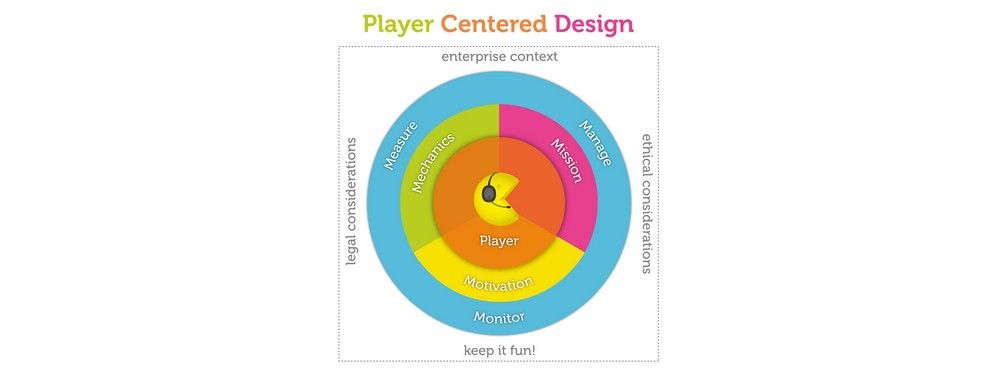




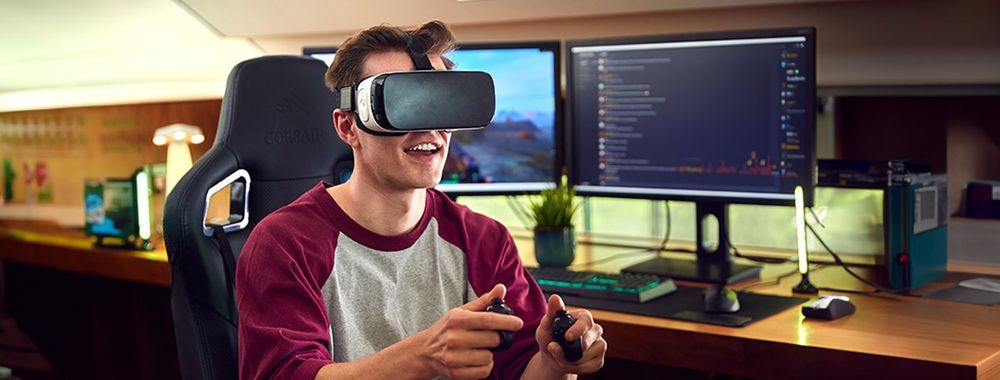

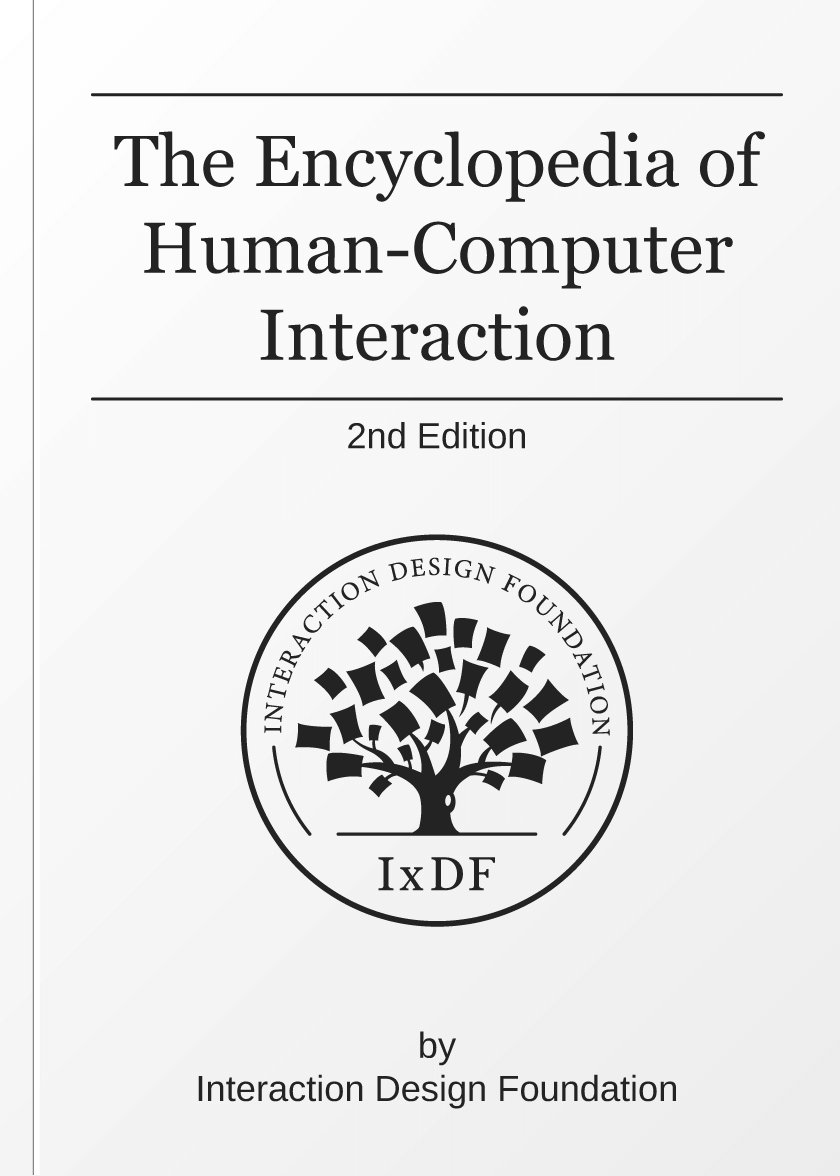


We believe in Open Access and the democratization of knowledge. Unfortunately, world-class educational materials such as this page are normally hidden behind paywalls or in expensive textbooks.
If you want this to change, , link to us, or join us to help us democratize design knowledge!
